Every day, American students head off to school and need devices and connectivity to learn and grow. Dynamic spectrum sharing, including CBRS, is being used to boost connectivity in schools, close the school-to-home digital divide, improve transit safety, and more. Learn more below about how CBRS is powering America’s educational system, from K-12 to college and everything in between:
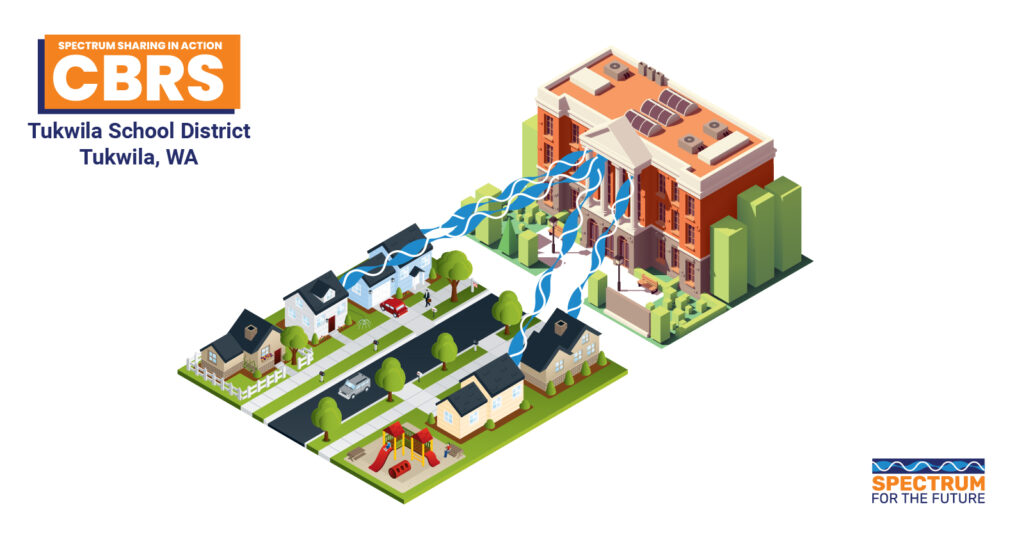
Tukwila School District Bridges the Digital Divide with CBRS
Tukwila School District in Washington State is using CBRS to eliminate educational gaps by delivering reliable internet access directly to students’ homes. Through strategic partnerships, the district created a private network that ensures as many as 1,200 students have the broadband connectivity needed for remote learning, addressing a long-standing digital divide.
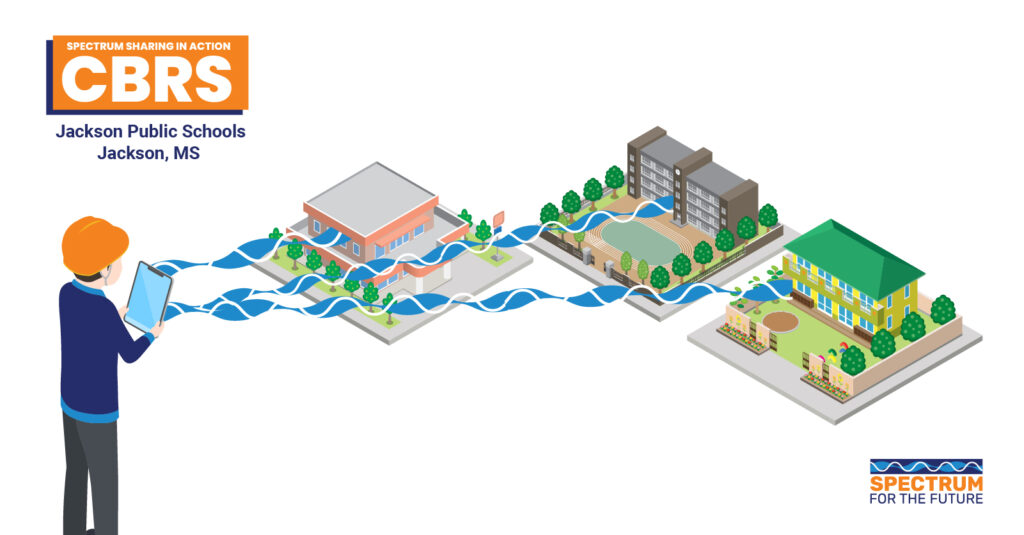
Jackson Public Schools Powers Learning with CBRS Networks
Jackson Public Schools in Mississippi is leveraging CBRS to serve nearly 17,000 students across 36 schools spanning 104 square miles. Partnering with Alef and supported by the Kellogg Foundation, the district uses CBRS-based private networks to ensure consistent connectivity while enabling remote connectivity, campus safety, wireless coverage on school buses, and at-home internet access for students.

Cal Poly Builds Smart Campus with CBRS Infrastructure
California Polytechnic State University is using CBRS to create a fully digital campus environment. Partnering with Federated Wireless and AWS, Cal Poly deployed private 5G networks that support smart buildings and precision agriculture research and enable innovative applications across its 6 college locations and academic programs.

Ohio State University Advances Agricultural Research with CBRS
Ohio State University is utilizing CBRS networks to accelerate agricultural technology research and development. Through partnerships, OSU’s 200+ academic centers use CBRS-powered private networks for scalable agricultural research that improves productivity and sustainability from local farms to global food systems.
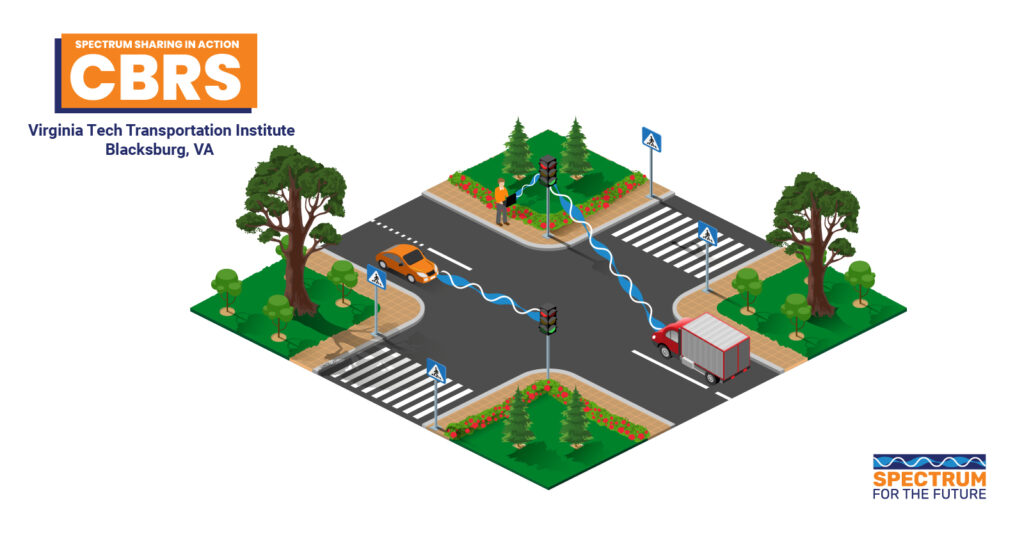
Virginia Tech Enhances Transportation Safety Research with CBRS
The Virginia Tech Transportation Institute (VTTI), the world’s largest driving safety research organization, uses CBRS to power advanced traffic warning systems for autonomous vehicle research. VTTI’s testing facility employs private 5G networks to connect roadside cameras and base stations that capture and transmit high-definition traffic imagery in real-time. This allows researchers to analyze traffic conditions and develop safer autonomous vehicle technologies.

University of Arizona Cultivates Precision Agriculture with CBRS
The University of Arizona’s Yuma Center of Excellence for Desert Agriculture uses CBRS networks to create comprehensive agricultural testing environments. The CBRS-powered infrastructure enables researchers to test, train, and showcase agricultural technologies before farmer implementation, bridging the gap between innovation and practical application.
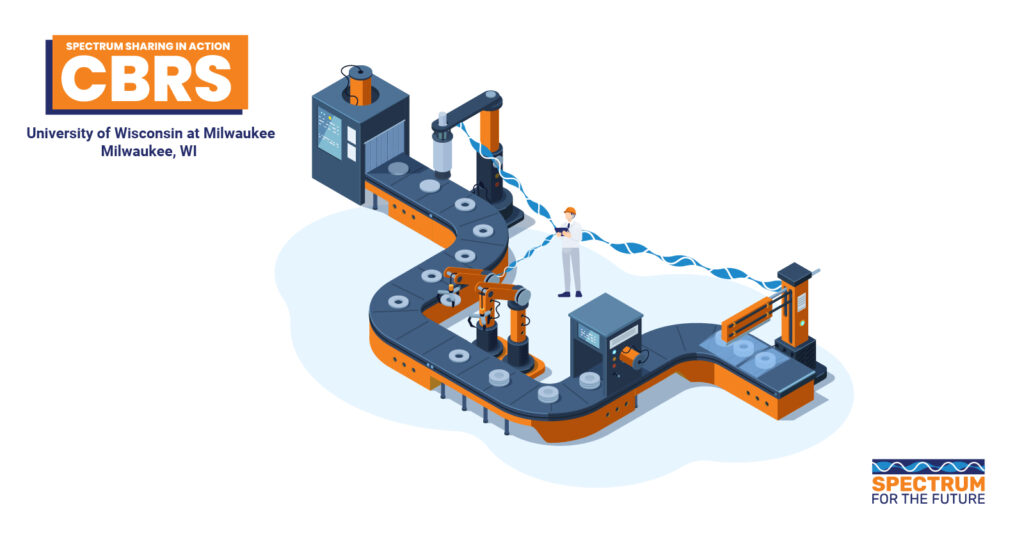
University of Wisconsin-Milwaukee Accelerates Industry 4.0 with CBRS
The University of Wisconsin-Milwaukee’s Connected Systems Institute demonstrates how CBRS enables next-generation manufacturing research and workforce development. The private 5G network allows students, faculty, and industry partners to collaborate on critical smart manufacturing applications, from IIoT sensor integration to autonomous robotics control, and more.

Fresno Unified School District Extends Learning with CBRS
Fresno Unified School District in California is using CBRS-based private networks to close the school-to-home digital gap across its district. With the installation of CBRS-powered base station towers on schools, the district has expanded connectivity to its students across 24 school neighborhoods with plans for further expansion underway.

Fort Worth Independent School District Connects Students at Home with CBRS
Fort Worth Independent School District in Texas is leveraging CBRS technology to provide at-home connectivity in less densely-populated areas. Using CBRS-powered base stations, private networks, and connected equipment, Fort Worth ISD has ensured students have the connectivity they need to thrive in today’s digital world.

Castleberry Independent School District Tackles Homework Gap with CBRS
Castleberry Independent School District in Texas is using CBRS to ensure all elementary students have at-home connectivity while keeping costs to the district affordable. By deploying three strategically placed cell towers powered by CBRS spectrum, the district achieved complete coverage for student households at three elementary schools, ensuring reliable connections for remote learning and homework.

Fontana Unified School District Finds Connectivity Solution in CBRS
Fontana Unified School District in California is deploying CBRS to reach students in remote areas where homes are spread out far from the city center. After testing 40 base stations serving approximately 4,000 students, FUSD is expanding the network to deliver cost-effective and reliable connectivity. Students receive school-issued devices that connect to CBRS equipment, routing connections to the district’s secure network.
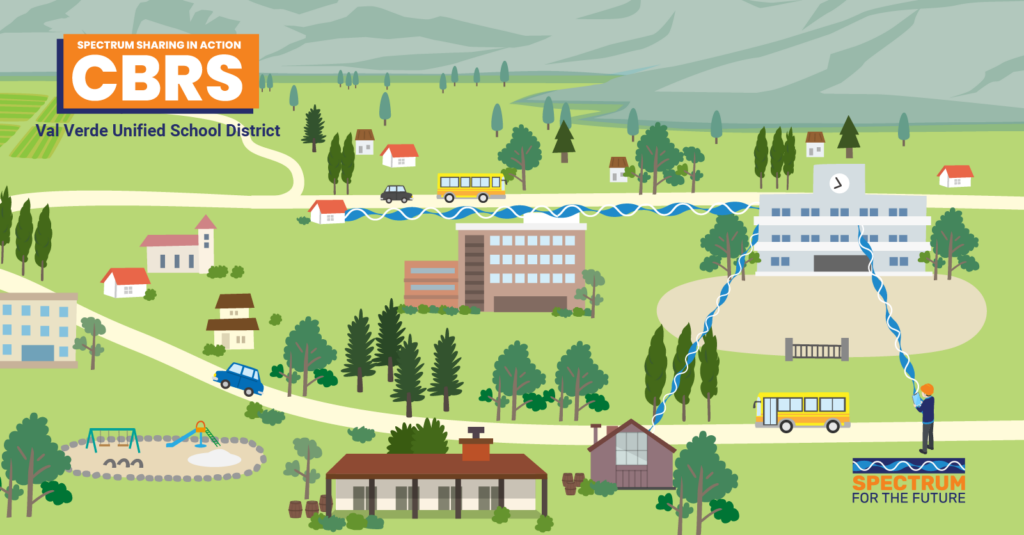
Val Verde Unified School District Deploys Hybrid CBRS Network
Val Verde Unified School District in California is using a hybrid approach combining CBRS and Wi-Fi technologies to connect 1,400 student households. Partnering with local WISP GeoLinks, the district uses CBRS for flat terrain and Wi-Fi for hilly areas, ensuring optimal coverage regardless of geography. Students receive external antennas and indoor routers that automatically authenticate school-issued Chromebooks, with the network capable of delivering speeds up to 1 Gbps.

Boulder Valley School District Partners for CBRS Connectivity
Boulder Valley School District in Colorado is deploying CBRS networks across 44 schools in partnership with local internet service providers to connect student households in mountainous areas. Using district-owned fiber for backhaul, BVSD mounted CBRS radios on school rooftops, providing free connectivity to approximately 1,000 student households.
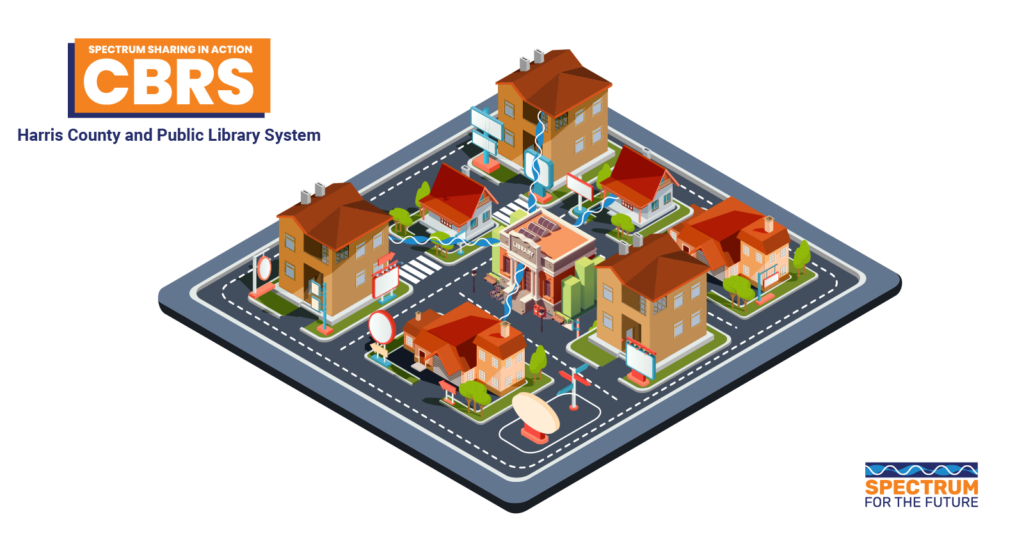
Harris County Public Library System Powers Student Access with CBRS
Harris County Public Library System in Texas launched Project Nitro, deploying 31 Motorola CBRS base stations to connect students across nine school districts. With 22 base stations on county buildings and seven on monopoles, plus two mobile units for emergency response, the county-driven initiative distributes connectivity devices through public libraries. Each tower supports approximately 300 simultaneous users, bringing free connectivity to students, parks, and community centers.


